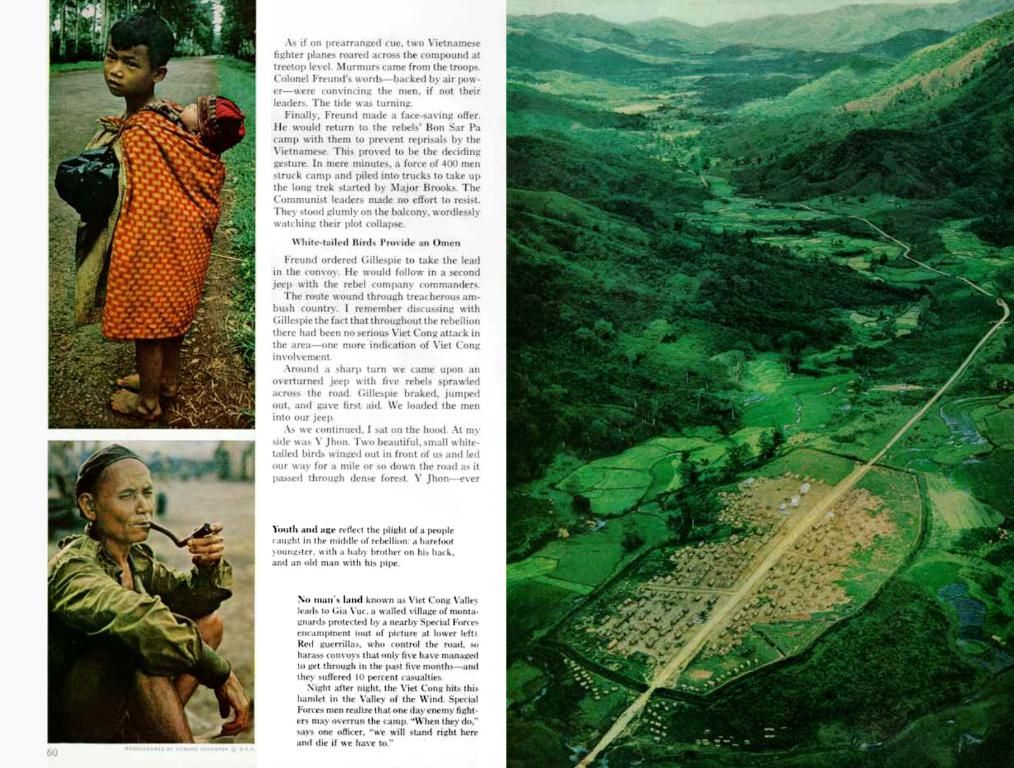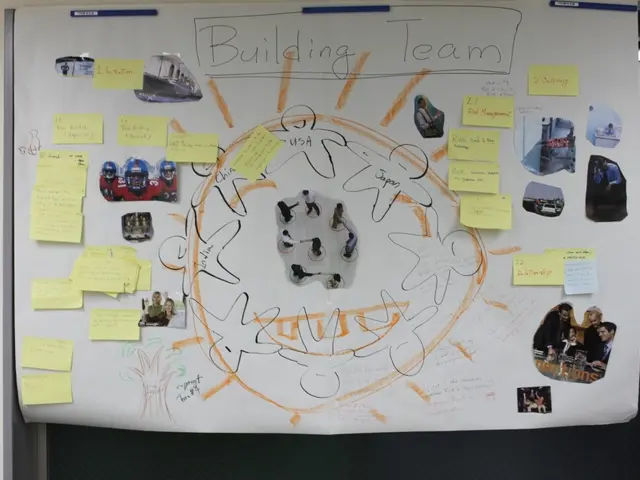Baking in the Bronze Age: Uncovering an Ancient Bread Recipe from Turkey's Soil
Ancient Turkish Bread Resurfaces After 5,000 Years Underground, Now Available for Consumption Again
Get a glimpse into the past with a 5,000-year-old loaf of bread, unearthed in Turkey. This remarkable find not only sparks curiosity about the culinary practices of our ancestors, but also offers potential solutions for contemporary challenges, such as drought-resistant agriculture.
The Reemerging Recipe from Küllüoba
- Location and Age: Discovered at the Küllüoba site near Eskişehir, central Turkey, this bread dates back to around 3300 BCE, making it the oldest known baked bread found during an archaeological excavation[1][4].
- Preserved in Time: The bread's remarkable condition was due to its burial under the threshold of a dwelling, allowing it to remain intact since the Bronze Age[1][4].
- Ritual or Abundance: The burning of one piece and burial beneath a newly-built home suggests a ritualistic or symbolic act related to abundance or protection[1][4].
From Museum to Market: Rebirthing Ancient Bread
- The Mayor's Vision: Eskişehir's mayor, Ayşe Ünlüce, took inspiration from the ancient loaf and envisioned recreating it. This initiative led to a collaboration with Halk Ekmek, a bakery dedicated to providing affordable food[2].
- Ancestral Ingredients: Using archaeobotanical analysis, the team replicated the bread's composition. They opted for Kavilca wheat-an ancient variety still found in regions of Anatolia-and combined it with bulgur and lentils. These ingredients are central to the region's contemporary cuisine[2][4].
- A Modern-Day Bestseller: The resulting bread has a firm, low-gluten texture and is free from preservatives. It's been a hit, with loaves selling out in hours, and the bakery now producing 300 Küllüoba loaves daily[2].
Water-Saving Grains for the Future
- Drought-Fighting Grains: The Eskisehir region, once abundant with water, is now experiencing drought. By cultivating drought-resistant grains like Kavilca wheat, farmers may adapt to changing climate conditions[1].
- Learning from the Past: Mayor Ünlüce emphasizes the importance of emulating our ancestors' agricultural practices. She suggests that moving towards less water-intensive crops, like ancient grains, could pave the way for a more sustainable future[1].
Expanding Horizons at Küllüoba
- Ancient Hub of Life: Küllüoba was a modest center of Bronze Age activities, including agriculture, crafts, trade, and mining[1][4].
- Rediscovering the Past: As archaeologists continue to explore Küllüoba, a settlement of the Hattians-predecessors to the Hittites- they uncover more pieces of the past. These artifacts provide valuable insights into the lives of the Hattians, bringing their history to life[1][4].
"It's a gift from the land that has been preserved for 5,000 years," states Mayor Ünlüce, expressing the importance of preserving this historical heritage for future generations[1].
[1] Archaeologists Unearth Five-Thousand-Year-Old Bread in Turkey
[2] From Turkish Museum to Bakery: an Ancient Bread is Reborn
[3] Ancient Kavilca wheat could hold secrets for reducing water usage in crops
[4] The baking mysteries of 5,000-year-old bread
[5] How breadmaking evolved over thousands of years
- Science unearthed an ancient bread recipe from Turkey, dating back to around 3300 BCE, which could offer solutions for contemporary challenges like drought-resistant agriculture.
- This unique bread, discovered at the Küllüoba site, was replicated by a collaboration between Eskişehir's mayor and a local bakery using ancestral ingredients such as Kavilca wheat, bulgur, and lentils.
- The resulting bread, free from preservatives, has a firm, low-gluten texture and has proven to be a modern-day bestseller, with loaves selling out in hours.
- Drought-resistant grains like Kavilca wheat, may help farmers adapt to changing climate conditions in the Eskisehir region.
- Mayor Ünlüce emphasizes the importance of emulating ancient agricultural practices, suggesting a shift towards less water-intensive crops like ancient grains as a step towards a more sustainable future.
- Küllüoba, during the Bronze Age, was a modest center for agriculture, crafts, trade, and mining.
- Archaeologists continue to explore Küllüoba, uncovering more pieces of the past, providing valuable insights into the lives of the Hattians, the predecessors to the Hittites.
- The ancient bread's remarkable condition was due to its burial under the threshold of a dwelling, allowing it to remain intact since the Bronze Age, offering a glimpse into the culinary practices of our ancestors.
- By preserving historical heritage like the 5,000-year-old bread, we ensure that future generations can appreciate and learn from our past, merging environmental-science with contemporary health-and-wellness, food-and-drink, lifestyle, and even cooking practices.







